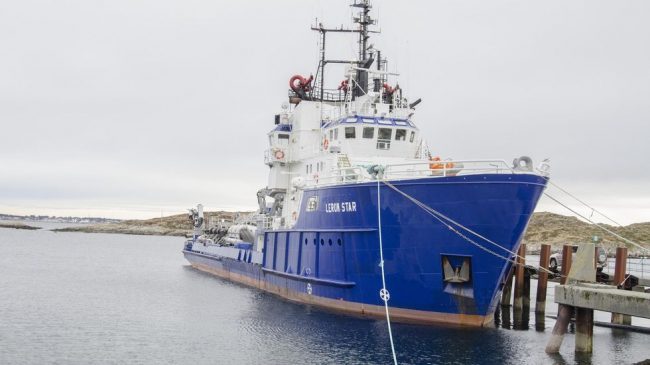For the past six months, Midt Norsk Kystservice and Lerow have declared bankruptcy. Senior adviser Einar Stephansen in Ramboll Norway, who has been following the service boat industry for several years, is not surprised and believes there are more bankruptcies ahead in the industry.
On Tuesday, Lerow threw in the towel and announced tenders. Last July, Midt Norsk Kystservice did the same. Both companies refer to a tough market as one of the causes of bankruptcy.
Einar Stephansen has for several years created an overview for SalmonBusiness of Norway’s largest service boat companies related to salmon farming. He is not surprised by the bankruptcies in Midt Norsk Kystservice and Lerow.
“The capacity of the service boat industry is too large, there are too many vessels in operation. We expect more bankruptcies,” says Stephansen to SalmonBusiness.
He believes it will strengthen other shipping companies that vessels are taken out of service and some shut down operations.
“It is the most operational and cost-effective shipping companies that will survive. It is a sign of health for the industry that the overall capacity will be reduced,” says Stephansen.
Many are struggling
The service boat industry today consists of 300 vessels in 60 shipping companies. In 2018, this industry had sales of EUR 237 million.
Revenues this year increased by 11 pct., while operating expenses increased by 19 pct. Profit before tax decreased by 36 pct.
The financial analysis of the service boat industry for 2019 will be presented in collaboration with SalmonBusiness in August this year. The analysis will show that the service boat industry has many financially strong companies, but also candidates who should restructure or terminate operations.
“The 2019 reports are expected to show weaker figures. Many are struggling and this cant continue,” says Stephansen.
He says that Ramboll splits the shipping companies into three groups: the ten largest, the 15 medium-sized and the 30 small shipping companies.
“The ten largest have broadly good operations and a satisfactory economy, while the middle group and the small shipping companies have variable results,” says Stephansen.
He points out that the medium-sized shipping companies run two to five service boats, and have a turnover of between EUR 1.9 and 5.9 million.
“In this unit, three shipping companies presented an annual report for 2018 with a negative result before tax. Half had reduced cash flow in 2018, as measured by EBITDA (operating profit before interest expenses, depreciation, and tax). Most shipping companies have large investments behind them. So EBITDA is expected to increase so the banks can be serviced. Reduced EBITDA turns on all warning lights,” says Stephansen, adding:
“The group consisting of the 30 smallest shipping companies each operates one to two service boats and sales are below NOK 20 million. In this group, half of the shipping companies went into deficit in 2018.
Many struggle with weak finances.
More companies may have problems with bank connection said CEO Hallgeir Ivan Bremnes in Lerow on Tuesday to SalmonBusiness. The board had no choice but to announce auctions because Danske Bank terminated the company’s banking and leasing commitments.
Stephansen believes one of the most important jobs to do when setting up a company or shipping company is to choose their financial partners.
“If you choose a bank where the credit committee sits abroad with poor knowledge of the Norwegian service boat industry, you cannot expect the bank to be an active partner when faced with additional challenges. Collaboration in the problem phase often works better when you find viable solutions with financiers with local expertise and knowledge of the service boat industry in the district. Several shipping companies may experience this in the time ahead,” warns Stephansen.

